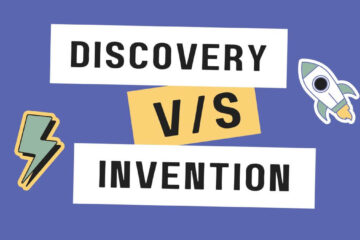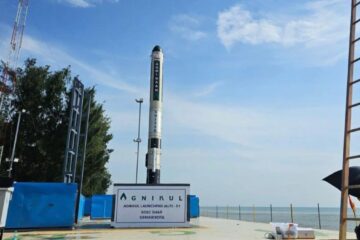India Becomes First Country To Land On Moon’s South Pole: Chandrayaan-3, India’s third lunar mission, achieved a remarkable milestone by successfully touching down on the Moon’s surface at 6:03 PM IST on Wednesday, August 23. This accomplishment is significant because it marks India as the first nation to land a spacecraft on the Moon’s southern pole. Additionally, India has now joined the esteemed group of nations, including the United States, the former Soviet Union, and China, that have achieved lunar landings.
Attempt Chandrayaan-3 Moon Mission Quiz Now!
Check All ISRO Missions Here!
Table of Contents
Chandrayaan 3 Successfully Lands on the Moon To Create History
On 23 August 2023, the Indian Space Research Organisation (ISRO) accomplished a historic milestone by flawlessly executing the landing of Chandrayaan-3’s Vikram lander on the uncharted South Pole of the Moon. This achievement, a world-first, propels India into an exclusive club of nations, making it the very first to successfully land a spacecraft on this unexplored lunar region.
This remarkable feat not only cements India’s position in history but also showcases the country’s prowess in space technology. The Chandrayaan-3 mission, characterized by its audacious ambition and pioneering spirit, has garnered global attention.
ISRO chief S Somanath declared, “India is on the Moon,” as the Chandrayaan-3 lander module Vikram achieved a safe and gentle landing on the lunar surface.
Chandrayaan-3 is on Top of the Most Viewed Live Streams on YouTube
Check the ISRO Chairman List.
Why South Pole of the Moon is Important?
Nearly all regions of the Moon are in a perpetual state of either sunlight or darkness. However, things are different at the moon’s southern pole, where sunlight angles differently, creating elongated shadows across the lunar craters. Some of these craters remain in perpetual shadow, never touched by sunlight, potentially harbouring ancient ice deposits that have been preserved for billions of years.
In the past, various lunar orbiters, including India’s Chandrayaan-1 and Chandrayaan-2 missions, have identified traces of hydroxyl (OH) and water on the Moon’s surface.
Water is an invaluable resource in long-term space exploration, akin to discovering a precious resource in space. This is why the South Pole is of strategic importance, as lunar water could serve as a source of fuel, oxygen, and drinking water, making it a promising location for lunar mining and potentially future human settlements.
Know about Artificial Moon soil on Earth
Challenges of Landing Near the Lunar South Pole
Achieving a soft landing on the lunar south pole is an incredibly tough endeavour.
To clarify, a soft landing entails gently and precisely landing a spacecraft without causing any damage. However, accomplishing this task anywhere on the Moon is a formidable undertaking, and it becomes even more daunting in the challenging terrain of the lunar south pole.
Historically, missions like NASA’s Apollo and Surveyor, as well as the Soviet Luna missions, landed closer to the lunar equator. This choice was driven by the fact that the terrain there is relatively flat and more conducive to successful landings compared to the rugged and challenging landscape of the South Pole.
The southern polar region poses significant challenges. It is characterized by rugged, uneven terrain with numerous craters and deep trenches. Moreover, it experiences prolonged periods of darkness, with temperatures plummeting to a bone-chilling -230°C. Consequently, the lunar south pole has seen its share of failed attempts, including India’s Chandrayaan-2 lander and more recently, Russia’s Luna-25, both of which crash-landed there.
This raises a pertinent question: Why not land in an easier location and then travel to the South Pole? Unfortunately, this is virtually impossible due to the vast distances involved. Solar-powered rovers, which have a limited operational lifespan, would struggle to cover such challenging terrain.
Now with the success of Chandrayaan-3, the future prospects of exploring these enigmatic, shadowy regions of the South Pole are bright.
Following India’s endeavours, NASA’s Artemis mission is scheduled for a lunar landing in 2024, and China aims to reach the coveted South Pole by 2026. These efforts bring us one step closer to unravelling the mysteries of our constant celestial companion, the Moon.
Chandrayaan 3 Lander, Rover and Propulsion Module
| Sl No. | Parameter | Specifications |
|---|---|---|
| 1. | Mission Life (Lander & Rover) | One lunar day (~14 Earth days) |
| 2. | Landing Site (Prime) | 4 km x 2.4 km, 69.367621 S, 32.348126 E |
| 3. | Science Payloads | Lander: – Radio Anatomy of Moon Bound Hypersensitive Ionosphere and Atmosphere (RAMBHA) – Chandra’s Surface Thermo-Physical Experiment (ChaSTE)<br>- Instrument for Lunar Seismic Activity (ILSA) – Laser Retroreflector Array (LRA) Rover: – Alpha Particle X-Ray Spectrometer (APXS) – Laser Induced Breakdown Spectroscope (LIBS) Propulsion Module: -Spectro-polarimetry of Habitable Planet Earth (SHAPE) |
| 4. | Two Module Configuration | – Propulsion Module (Carries Lander from launch injection to Lunar orbit) – Lander Module (Rover is accommodated inside the Lander) |
| 5. | Mass | – Propulsion Module: 2148 kg – Lander Module: 1752 kg (including Rover of 26 kg) – Total: 3900 kg |
| 6. | Power generation | – Propulsion Module: 758 W – Lander Module: 738 W (with Bias) – Rover: 50 W |
| 7. | Communication | – Propulsion Module: Communicates with IDSN – Lander Module: Communicates with IDSN and Rover. Chandrayaan-2 Orbiter is also planned for contingency link. – Rover: Communicates only with Lander. |
| 8. | Lander Sensors | – Laser Inertial Referencing and Accelerometer Package (LIRAP) – Ka-Band Altimeter (KaRA) – Lander Position Detection Camera (LPDC) – Lander Hazard Detection & Avoidance Camera (LHDAC) – Laser Altimeter (LASA) – Laser Doppler Velocimeter (LDV) – Lander Horizontal Velocity Camera (LHVC) – Micro Star sensor – Inclinometer & Touchdown sensors |
| 9. | Lander Actuators | – Reaction wheels – 4 nos (10 Nms & 0.1 Nm) |
| 10. | Lander Propulsion System | – Bi-Propellant Propulsion System (MMH + MON3), 4 nos. of 800 N Throttleable engines & 8 nos. of 58 N; Throttleable Engine Control Electronics |
| 11. | Lander Mechanisms | – Lander leg – Rover Ramp (Primary & Secondary) – Rover<br>- ILSA, RAMBHA & ChaSTE Payloads – Umbilical connector Protection Mechanism – X- Band Antenna |
| 12. | Lander Touchdown Specifications | – Vertical velocity: ≤ 2 m / sec – Horizontal velocity: ≤ 0.5 m / sec<br>- Slope: ≤ 12 deg |
Objectives of Scientific Payloads:
| Sl. No | Lander Payloads | Objectives |
|---|---|---|
| 1. | Radio Anatomy of Moon Bound Hypersensitive Ionosphere and Atmosphere (RAMBHA) | Langmuir probe (LP) to measure the near-surface plasma (ions and electrons) density and its changes with time. |
| 2. | Chandra’s Surface Thermo-Physical Experiment (ChaSTE) | To carry out measurements of thermal properties of the lunar surface near the polar region. |
| 3. | Instrument for Lunar Seismic Activity (ILSA) | To measure seismicity around the landing site and delineate the structure of the lunar crust and mantle. |
| 4. | Laser Retroreflector Array (LRA) | A passive experiment to understand the dynamics of the Moon system. |
| Sl. No | Rover Payloads | Objectives |
|---|---|---|
| 1. | Laser Induced Breakdown Spectroscope (LIBS) | Qualitative and quantitative elemental analysis & To derive the chemical composition and infer mineralogical composition to further our understanding of the lunar surface. |
| 2. | Alpha Particle X-Ray Spectrometer (APXS) | To determine the elemental composition (Mg, Al, Si, K, Ca, Ti, Fe) of lunar soil and rocks around the lunar landing site. |
| Sl. No | Propulsion Module Payload | Objectives |
|---|---|---|
| 1. | Spectro-polarimetry of Habitable Planet Earth (SHAPE) | Future discoveries of smaller planets in reflected light would allow us to probe into a variety of exoplanets which would qualify for habitability (or for presence of life). |
As the country commemorates this momentous achievement, attention turns toward the scientific revelations that await us through Chandrayaan-3’s Pragyan rover at the Lunar South Pole. The information collected and the knowledge acquired will unquestionably enrich our collective comprehension of the Moon, its origins, and its significance in the vast expanse of the cosmos.
In truth, India’s triumph with Chandrayaan-3 underscores the idea that the sky does not mark a boundary, but instead, it signifies the commencement of an endless expedition into the realms of exploration and revelation.
FAQs on First Country To Land On Moon’s South Pole
On August 23, 2023, India became the first country to successfully land a spacecraft on the moon’s south pole.
Landing at the South Pole of the Moon is historic because it has never been done before.
The South Pole of the Moon is of great scientific interest because it offers unique conditions. Its terrain creates long shadows, and some areas are permanently in shadow, potentially preserving ancient ice deposits. This ice could serve as a critical resource for future space exploration, including fuel, oxygen, and drinking water.
Soft landing near the lunar South Pole is exceptionally challenging due to its rugged, uneven terrain with craters and trenches. The region experiences extended periods of darkness and frigid temperatures, reaching as low as -230°C. These conditions have led to previous mission failures, including India’s Chandrayaan-2 and Russia’s Luna-25.
Landing in an easier location and then travelling to the South Pole is virtually impossible due to the vast distances involved. Additionally, solar-powered rovers have limited operational lifespans, and the challenging terrain makes traversing to the South Pole extremely difficult.
The success of Chandrayaan-3 paves the way for further exploration of the lunar South Pole. India’s achievement is followed by NASA’s Artemis mission in 2024 and China’s goal to reach the South Pole by 2026. These endeavors bring us closer to unraveling the mysteries of the Moon and potentially establishing human settlements on its surface.



0 Comments